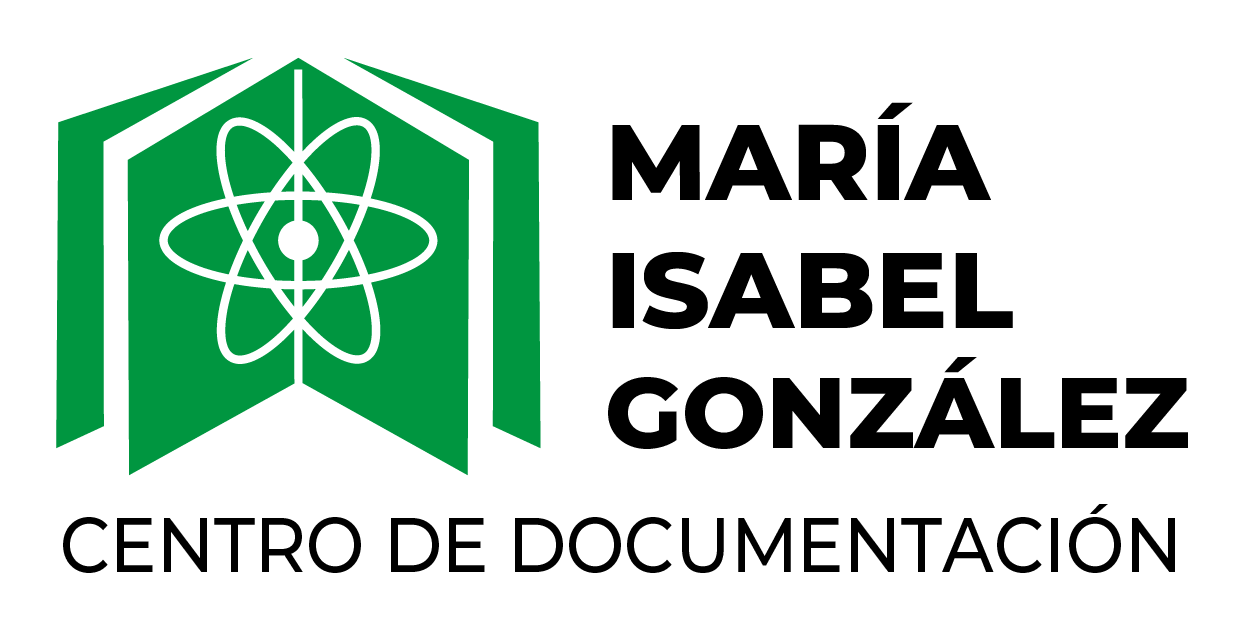MARC details
| 000 -LEADER |
|---|
| campo de control de longitud fija |
07429mm aa2200241a 44500 |
| 003 - IDENTIFICADOR DE NÚMERO DE CONTROL |
|---|
| campo de control |
AR-SmCIES |
| 005 - FECHA Y HORA DE LA ÚLTIMA TRANSACCIÓN |
|---|
| campo de control |
20190909100558.0 |
| 008 - DATOS DE LONGITUD FIJA--INFORMACIÓN GENERAL |
|---|
| campo de control de longitud fija |
15 07 12001 ag d s spa d |
| 040 ## - FUENTE DE CATALOGACIÓN |
|---|
| Centro catalogador/agencia de origen |
AR-SmCIES |
| Centro/agencia transcriptor |
AR-SmCIES |
| 100 1# - ENTRADA PRINCIPAL--NOMBRE DE PERSONA |
|---|
| Nombre de persona |
Mirandou, Marcela Inés |
| 9 (RLIN) |
1587 |
| 245 10 - MENCIÓN DEL TÍTULO |
|---|
| Título |
Interdifusión entre aleaciones de U-Mo y Al. Ensayo de irradiación . |
| 246 1# - FORMA VARIANTE DEL TITULO |
|---|
| Título propio/Titulo breve |
Interdiffusion between U-Mo and Al alloys. Irradiation test. |
| 260 ## - PUBLICACIÓN, DISTRIBUCIÓN, ETC. |
|---|
| Fecha de publicación, distribución, etc. |
2001. |
| 300 ## - DESCRIPCIÓN FÍSICA |
|---|
| Dimensiones |
174 p. |
| 500 ## - NOTA GENERAL |
|---|
| Nota general |
Cantidad de ejemplares: 1 |
| 502 ## - NOTA DE TESIS |
|---|
| Nota de tesis |
Tesis para optar al título de Doctora en Ciencia y Tecnología, mención materiales. Director/es: Balart, Silvia; Fortis, Ana María |
| 520 ## - RESUMEN, ETC. |
|---|
| Sumario, etc. |
La política de no proliferación del programa Reduced Enrichment for Research and Test Reactors [RERTR], promueve la conversión de los núcleos de los reactores de investigación y producción de radioisótopos de modo que utilicen uranio de bajo enriquecimiento en lugar de uranio de alto enriquecimiento. Para ello, los elementos combustibles actualmente en uso, en su mayoría utilizando U3Si2, deberían ser fabricados con aleaciones de mayor densidad de U, como ser U-Mo, pero sin modificar el diseño actual, es decir, aleación portadora de U dispersa en una matriz de Al. Las aleaciones U-[6 porciento en peso a 10 porciento en peso] de Mo, en fase gamma metaestable, han mostrado un buen comportamiento bajo irradiación. Sin embargo, dentro de los elementos combustibles, se observaron importantes niveles de porosidad e hinchado luego de la irradiación en los distintos experimentos de calificación. Este fenómeno fue asociado a la zona de interacción, crecida por interdifusión, entre las partículas de U-Mo y el Al puro de la matriz. Dentro del programa de calificación, es de vital importancia el conocimiento y control de la zona de interacción U-Mo/Al. Diversos laboratorios del mundo se han abocado a esta problemática surgiendo, como un resultado significativo, que el agregado de Si al Al de la matriz sería una posible solución. En esta tesis se estudió la microestructura de la zona de interacción crecida por interdifusión en pares de difusión U-7Mo/Al-Si [aleaciones comerciales Al 6061, Al 4043 and Al A356] tratados térmicamente a 550 ºC and 340 ºC. Para la caracterización se utilizaron las técnicas de microscopía óptica y electrónica de barrido, espectroscopía dispersiva en energía y longitud de onda y difracción de rayos X con equipo de laboratorio y con radiación síncrotron. Esta última resultó clave en la completitud de la caracterización. Como resultados principales se destaca la importante acumulación de Si encontrada dentro de todas las zonas de interacción. Las fases identificadas en las diferentes zonas de interacción mostraron ser dependientes de la temperatura del tratamiento térmico, de la cantidad de Si en la aleación Al-Si y del estado cristalográfico de la aleación U-Mo durante el proceso de interdifusión. El conjunto de fases identificadas fueron: U[Al,Si]3, U3Si5, Al20Mo2U, U3Al2Si3, UAl3 y Al43Mo4U6. |
|
|---|
| Sumario, etc. |
The community in charge of research reactor is dedicating great efforts to convert the cores of research and isotopes production reactors from highly enriched uranium to low enriched uranium under the non-proliferation policy of the Reduced Enrichment for Research and Test Reactors [RERTR] program. Fuel elements, most of them currently working with U3Si2, are expected to be replaced by other ones with increased U density, such as U-Mo alloys, with no modification of the initial design that is dispersed in an Al matrix. U-[6wt percent to 10wt percent]Mo alloys, in metastable gamma phase, have shown good irradiation behavior. However, excessive swelling and an important porosity in the meat of dispersion fuel elements were found in qualification experiments associated to the reaction, due to interdiffusion, that occurs between the U-Mo particles and Al matrix. The understanding and control of the U-Mo/Al interaction is an important feature in the conversion program. Important research is under course in several laboratories to solve this problem. From these experiments, the addition of Si to Al has been shown as a promising solution. In this thesis the study of the microstructure of the interaction layers in diffusion couples U-7Mo/Al-Si [commercial alloys Al 6061, Al 4043 and Al A 356] heat treated at 550 ºC and 340 ºC is presented. The characterization was carried out by the use of optical and scanning electron microscopy, wavelength and energy dispersive spectroscopy and X-ray diffraction with laboratory equipment and with synchrotron radiation. This last one was the key to success in the characterization. As main results it can be mentioned that an important amount of Si was found in all the interaction layers. Phases identified in the different interaction layers showed to be dependant of temperature, the amount of Si in the Al-Si alloy and the crystallografhic state of the U-Mo alloy while the interdiffusion is taking place. All the identified phases were U[Al,Si]3, U3Si5, Al20Mo2U, U3Al2Si3, UAl3 and Al43Mo4U6. The community in charge of research reactor is dedicating great efforts to convert the cores of research and isotopes production reactors from highly enriched uranium to low enriched uranium under the non-proliferation policy of the Reduced Enrichment for Research and Test Reactors [RERTR] program. Fuel elements, most of them currently working with U3Si2, are expected to be replaced by other ones with increased U density, such as U-Mo alloys, with no modification of the initial design that is dispersed in an Al matrix. U-[6wt percent to 10wt percent] Mo alloys, in metastable gamma phase, have shown good irradiation behavior. However, excessive swelling and an important porosity in the meat of dispersion fuel elements were found in qualification experiments associated to the reaction, due to interdiffusion, that occurs between the U-Mo particles and Al matrix. The understanding and control of the U-Mo/Al interaction is an important feature in the conversion program. Important research is under course in several laboratories to solve this problem. From these experiments, the addition of Si to Al has been shown as a promising solution. In this thesis the study of the microstructure of the interaction layers in diffusion couples U-7Mo/Al-Si [commercial alloys Al 6061, Al 4043 and Al A 356] heat treated at 550 ºC and 340 ºC is presented. The characterization was carried out by the use of optical and scanning electron microscopy, wavelength and energy dispersive spectroscopy and X-ray diffraction with laboratory equipment and with synchrotron radiation. This last one was the key to success in the characterization. As main results it can be mentioned that an important amount of Si was found in all the interaction layers. Phases identified in the different interaction layers showed to be dependant of temperature, the amount of Si in the Al-Si alloy and the crystallografhic state of the U-Mo alloy while the interdiffusion is taking place. All the identified phases were U[Al,Si]3, U3Si5, Al20Mo2U, U3Al2Si3, UAl3 and Al43Mo4U6. |
| 590 ## - NOTA LOCAL (RLIN) |
|---|
| Nota local |
Lugar de trabajo: Centro Atómico Constituyentes |
| 710 1# - ENTRADA AGREGADA--NOMBRE DE ENTIDAD CORPORATIVA |
|---|
| Nombre de entidad corporativa o nombre de jurisdicción como elemento de entrada |
Comisión Nacional de Energía Atómica. |
| Unidad subordinada |
Instituto de Tecnología Sabato. |
| 9 (RLIN) |
1034 |
|
|---|
| Nombre de entidad corporativa o nombre de jurisdicción como elemento de entrada |
Universidad Nacional de San Martín. |
| 9 (RLIN) |
1033 |
| 942 ## - ELEMENTOS DE ENTRADA SECUNDARIOS (KOHA) |
|---|
| Fuente de la clasificación o esquema de estantería |
Universal Decimal Classification |
| Tipo de ítem Koha |
Thesis |




